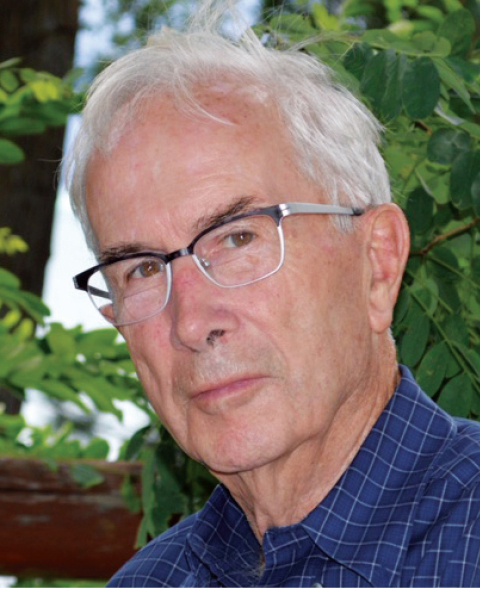Dr George Duncan McPherson, 1932–2020

Duncan was easy to like, occasionally difficult to fathom, and annoyingly intelligent with numerous interests both within and outside his profession. We met as junior surgical residents at Vancouver General Hospital and became friends for life.
Duncan passed away peacefully in Vancouver at dawn on 15 August 2020. He is survived by his immediate family: wife, Carol; and daughter, Alexandria; daughter, Margret (Bob); sons, Ian (Louise) and Hugh (Clariel); and four grandchildren, Maren, Jocelyn, and two newborn twins, Stellan and Lachlan. He is predeceased by his daughter, Cathy, and survived by his former wife, Catherine.
Born in Brant County, Ontario, Duncan was raised in a farming family with his sister, Helen, and brother, Gordon, both of whom predeceased him. He graduated from the medical program at the University of Western Ontario. To assist with his university fees, he drove a large tour bus in Banff, Alberta, during the summers. There he fell in love with the Rocky Mountains. He interned in Chicago after graduation before entering the orthopaedic program in Vancouver.
During his orthopaedic training he spent a year doing research with Dr Douglas Harold Copp at UBC, which in 1962 led to the identification and purification of a hormone that contributes to maintaining calcium and phosphate levels. Dr Copp named it calcitonin. For this work he received a master of science degree from UBC. After acquiring his Royal College Fellowship, Duncan’s research interests took him and his wife, Catherine, to New York as a fellow in orthopaedics at the Hospital for Special Surgery. This led to a position as medical research fellow at Lund University in Malmo, Sweden. He defended his thesis in Swedish and earned a PhD. In 2015, he was invited back and was honored as a doctor jubilaris at Lund. While in Sweden he made many friends and years later had the pleasure of sailing with some of them in the Mediterranean.
Duncan returned to Vancouver as a member of the orthopaedic staff at Shaughnessy Hospital and VGH. When I returned from postgrad training in the UK, I joined Bob Cowan as a plastic surgeon at VGH and opened an office with a young general surgeon just starting practice. When the young surgeon moved to a full-time UBC position, Duncan came to share our space. This pleasant arrangement lasted until I retired from practice 30 years later.
Duncan was always looking for ways to improve things. Some of you in my age group will remember when ambulances were modified Cadillacs, good only for transportation.
Realizing that care prior to arrival and during transport to emergency is often of vital importance, Duncan decided to do something about it. He convinced an RV fitter to modify a large van to give first responders the space and equipment to treat patients during transportation. This became the prototype for today’s modern ambulance. He had a strong belief in the benefits of seatbelts in cars and played a major role in convincing government to enact seatbelt legislation in BC. Because of these efforts, he was made an Office Brother of St. John Ambulance and received the Centennial Medal. In his spare time he found a year to serve as president of the then BCMA.
Duncan had three passions: cars, sailing, and traveling. He got me interested in collector car restorations, and it was not long after he built his first sailboat that I ordered mine. As time went on he became more interested in accident reconstruction and automotive medicine, which led to forensic orthopaedics. Because of his knowledge in this field a number of car companies retained him on a regular basis as an expert witness, which resulted in a lot of traveling. He was a long-standing and loyal member of the Association for the Advancement of Automotive Medicine and served on its board of directors.
Duncan and I had families of four children of similar ages. We both enjoyed our toys and it gave us great pleasure that our children enjoyed them equally. We were able to explore the West Coast and wonder at the beauty of our province. Occasionally we caught a fish. I will always remember the times we would anchor in False Bay on Lasqueti Island close to Black Chanter, Duncan’s boat, when the banana boat would come in with a catch of fresh prawns. We would all gather in Black Chanter’s cockpit to enjoy the prawns prepared by Cathy along with a glass of chilled white wine. Black Chanter was eventually replaced with something bigger and faster, and Duncan took on another pleasure, sailboat racing.
Because of his love for the mountains and exploring, Duncan found a place in the woods not too far from Twin Peaks, north of Kamloops. Here Duncan and Carol entertained family and friends with good food and wine and great scenery. Here he found time to restore two vintage family farm tractors with a lakeshore neighbor.
Duncan lived a life full of purpose and accomplishment. He was a very caring person who never hesitated to assist when needed. I feel fortunate to have had him as a friend.
—Douglas Courtemanche, MD, FRCSC
Vancouver
